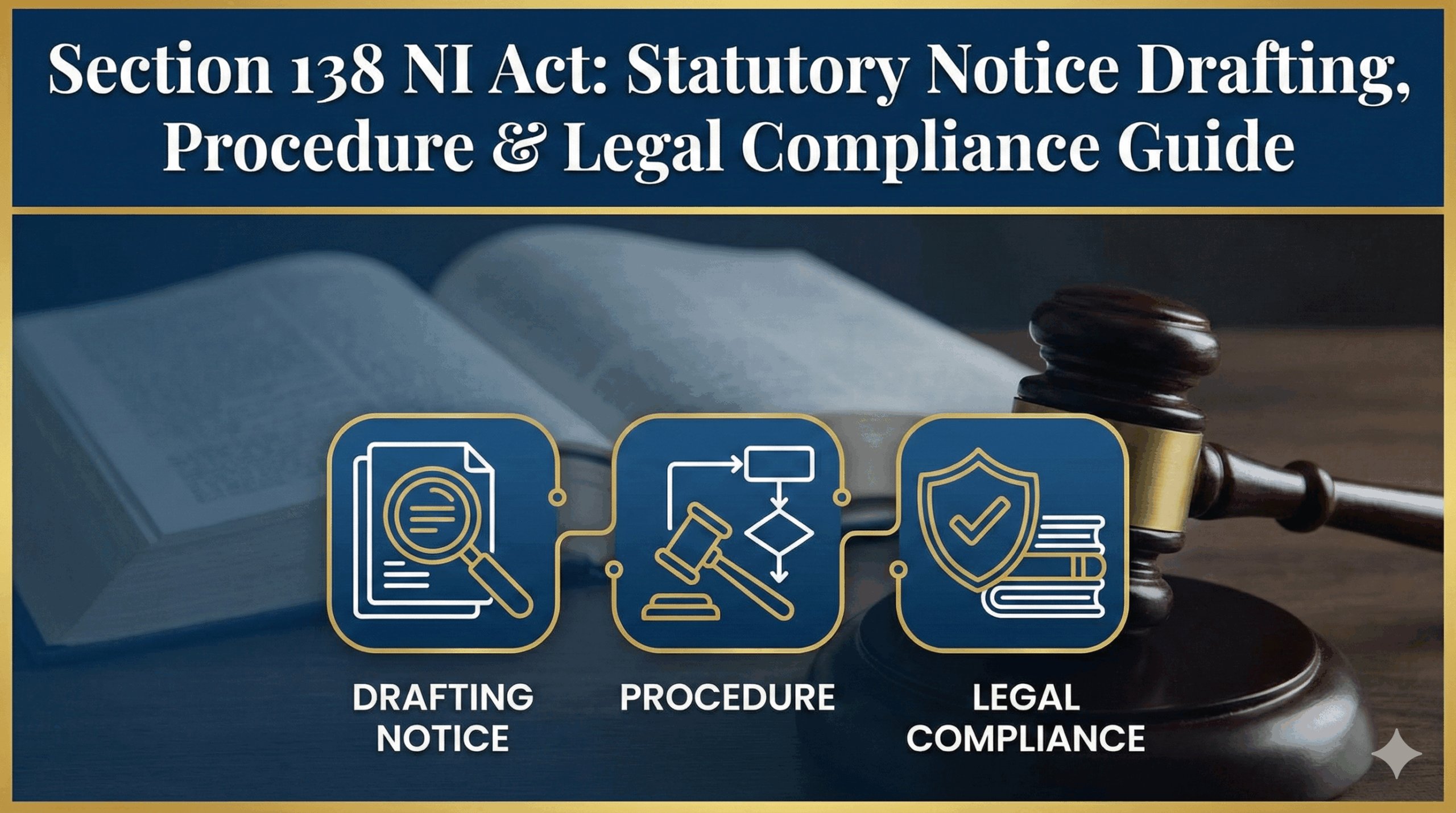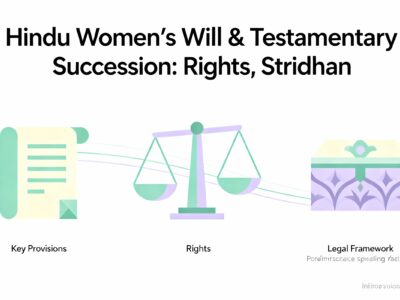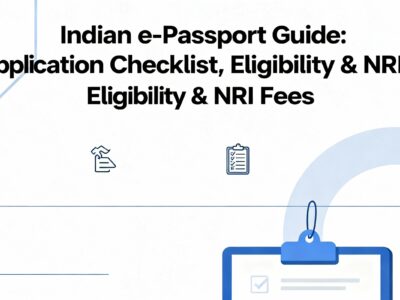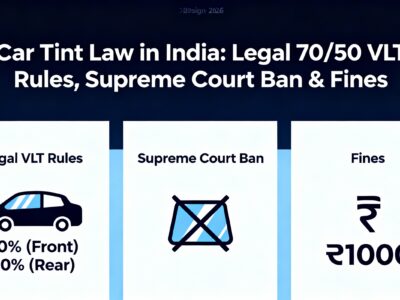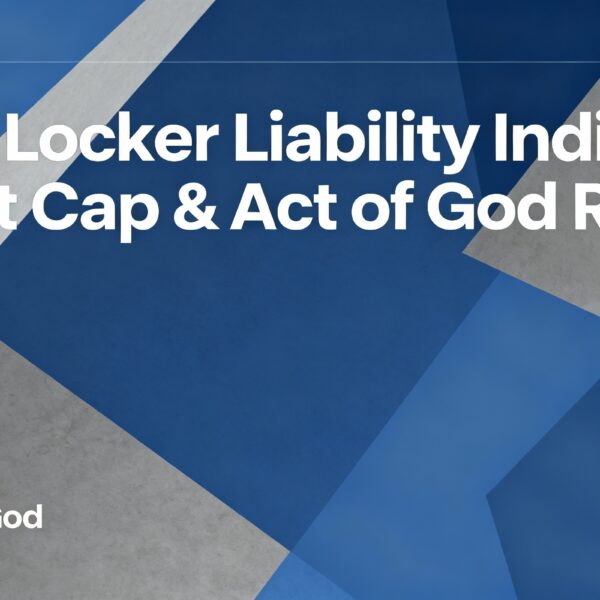Drunk Driving in India: Legal Alcohol Limit, Fines & Court Penalties
Thinking of driving after a drink in India? The consequences have never been more severe. Under Section 185 of the Motor Vehicles Act, the permissible limit for alcohol is a strict 0.03% BAC, and crossing it can lead to hefty fines, license suspension, and even jail time. This comprehensive 2025 guide breaks down everything you need to know about India’s drink-driving laws, from on-the-spot procedures and penalties for first-time offenders to the grave criminal charges you could face if an accident occurs. Know your rights, understand the risks, and stay safe on the road.
LEGAL ANALYSIS & PUBLIC AWARENESS
Driving Under the Influence in India: A Comprehensive 2025 Guide
Last Updated: October 6, 2025
This report provides a complete legal analysis of India's laws on driving under the influence (DUI). The core law is Section 185 of the Motor Vehicles Act, 1988, setting a strict Blood Alcohol Concentration (BAC) limit of 30 mg of alcohol per 100 ml of blood (0.03%). With the Motor Vehicles (Amendment) Act, 2019, penalties have been drastically increased to deter offenders. A first-time offence now carries a ₹10,000 fine and/or six months in jail. This guide breaks down the limits, penalties, enforcement procedures, and the severe consequences if a DUI leads to an accident, including invoking the stringent Indian Penal Code and its successor, the Bharatiya Nyaya Sanhita, 2023.
The Legal Foundation: What is the Limit?
Section 185 of the Motor Vehicles Act, 1988 is the cornerstone of India's drunk driving laws. It criminalizes not just driving, but even attempting to drive with a BAC over the prescribed limit. The law operates on a strict liability basis—your intention doesn't matter; if your BAC is over the limit, you've committed the offence.
Blood Alcohol Concentration (BAC) Limit
30mg / 100ml of blood
How Much is Too Much?
Even a small amount can put you over the limit. This varies based on body weight, metabolism, and food intake.
1 Large Whiskey
(60ml)
2 Glasses Wine
(200ml)
1 Pint Beer
(660ml)
The Science of Intoxication: How Alcohol Impairs Driving
Alcohol is a depressant that slows down the central nervous system. Even at the 0.03% BAC limit, critical driving skills are already compromised. Understanding this is key to appreciating the danger.
Slowed Reaction Time
The brain takes longer to process information and command the body to react to hazards like a pedestrian or a sudden stop.
Impaired Vision
Alcohol can blur vision, reduce peripheral awareness, and slow the eye's ability to adjust to changing light conditions.
Poor Judgment
It leads to overconfidence and risk-taking behaviour, like speeding, unsafe lane changes, or misjudging distances.
Reduced Coordination
Fine motor skills needed for steering, braking, and accelerating become clumsy and less precise.
A Statistical Snapshot: The Grim Reality of DUI in India
Data from the Ministry of Road Transport and Highways (MoRTH) and the National Crime Records Bureau (NCRB) paints a stark picture of the consequences of drunk driving on Indian roads.
~12,000
Accidents Annually
India records thousands of road accidents directly attributed to driving under the influence each year.
~5,000
Fatalities Annually
A significant percentage of these accidents result in deaths, making DUI a leading cause of road fatalities.
9 PM - 12 AM
Peak Offence Time
The highest number of DUI incidents are reported during late-night hours, particularly on weekends.
Beyond Alcohol: The Threat of Drugged Driving
It's a critical, often overlooked fact: Section 185 of the Motor Vehicles Act is not limited to alcohol. It explicitly prohibits driving under the influence of a drug to such an extent as to be incapable of exercising proper control over the vehicle. This includes illegal narcotics, prescription medications, and even some over-the-counter drugs that cause drowsiness or impair cognitive function.
Key Points on Drugged Driving
- No "Legal Limit": Unlike alcohol, there is no specified quantitative limit for drugs in the bloodstream. The law is based on impairment—whether the substance has rendered the driver incapable of safe driving.
- Onus of Proof: Enforcement is more complex. It relies on the police officer's observations of the driver's behaviour, physical appearance, and performance in field sobriety tests. A blood test is the ultimate confirmation.
- Same Penalties: The penalties for drugged driving are identical to those for drunk driving under Section 185.
Special Rules: Commercial vs. Private Vehicles
The law holds drivers of commercial vehicles—such as trucks, buses, and taxis—to an even higher standard due to the greater risk they pose to public safety.
Private Vehicle Drivers
Subject to the standard BAC limit of 0.03% and the penalties outlined in Section 185 of the Motor Vehicles Act.
Commercial Vehicle Drivers
Many states and transport authorities are pushing for a zero-tolerance policy for commercial drivers. Even a minuscule amount of alcohol can lead to immediate license suspension and severe penalties, often greater than for private drivers, including blacklisting from commercial driving.
Penalties & Consequences: The 2019 Amendment
The Motor Vehicles (Amendment) Act, 2019, drastically increased penalties, shifting from nominal fines to aggressive deterrence. The message is clear: drunk driving is a serious threat to public safety.
First-Time Offence
₹10,000 Fine
and/or
Up to 6 Months Jail
License Suspension: Minimum 6 months.
Second Offence (within 3 years)
₹15,000 Fine
and/or
Up to 2 Years Jail
License Suspension: Potential for permanent revocation.
Interactive Chart: Penalty Evolution
Click on the bars to see details.
Special Case: Juvenile Offenders
When a person under the age of 18 is caught driving under the influence, the law takes a two-pronged approach, penalizing both the minor and the vehicle's owner or guardian.
Consequences for DUI by a Minor
For the Juvenile
- The case is tried under the Juvenile Justice (Care and Protection of Children) Act, 2015.
- The minor will be ineligible for a learner's license until the age of 25.
For the Guardian / Vehicle Owner
- Presumed to have given consent, unless proven otherwise.
- Faces a fine of ₹25,000 and imprisonment up to 3 years under Section 199A of the MVA.
- The vehicle's registration is cancelled for one year.
On-the-Road Enforcement: Procedures & Rights
Police use breathalyzers for initial screening. Understanding the procedure and your rights is crucial, but refusing a test has severe consequences.
What Happens if You Refuse a Breathalyzer Test?
Driver Refuses Test
Arrest Without Warrant
Adverse Inference in Court
The court can legally presume you refused because you knew you were over the limit.
Know Your Rights During a Traffic Stop
While compliance is key, knowing your rights ensures the process is fair and lawful. Here is a checklist for interacting with law enforcement during a DUI check.
Stay Calm & Be Polite
Aggressive behaviour can escalate the situation. Cooperate respectfully.
Provide Your Documents
You are required to show your driving license, registration certificate (RC), and insurance papers.
Right to a Clean Mouthpiece
Insist on a fresh, sealed mouthpiece for the breathalyzer test for hygiene and accuracy.
Right to a Second Test
If you fail the initial screening, you can request a second test, which is typically more accurate, at a police station or hospital.
Do Not Flee the Scene
This will lead to more serious charges and is seen as an admission of guilt.
Do Not Argue on the Spot
The roadside is not a courtroom. Present your legal arguments through a lawyer later.
The Role of Technology in Enforcement
Modern technology is making DUI enforcement more efficient, transparent, and difficult to evade.
Advanced Breathalyzers
New devices are more accurate, provide instant printouts, and may include GPS tagging to verify the location of the test, reducing disputes.
Body & Dashboard Cameras
Video evidence captures the entire interaction, protecting both the driver from misconduct and the officer from false allegations. It provides objective evidence of the driver's state.
e-Challan System
Digital challans are linked to the VAHAN and SARATHI databases, creating an immediate and permanent record of the offence that cannot be easily "overlooked".
The Legal Process: From Roadside to Courtroom
Being charged with a DUI initiates a formal legal process. Here is a simplified step-by-step timeline of what to expect after an arrest.
1. Arrest & FIR
After a positive breathalyzer or blood test, you will be arrested. A First Information Report (FIR) is registered, and your vehicle may be impounded.
2. Medical Examination
A formal medical examination and blood test will be conducted at a government hospital to serve as primary evidence in court.
3. Court Production & Bail
You must be produced before a magistrate within 24 hours. This is when you can apply for bail, typically granted for a first-time offence without an accident.
4. Chargesheet & Trial
Police will file a chargesheet. The court trial begins, where the prosecution presents evidence (test results, witness testimony) and your lawyer presents your defence.
5. Judgment & Sentencing
The court delivers a judgment. If convicted, the magistrate imposes a sentence (fine, imprisonment, license suspension) based on the law and case specifics.
Common Legal Defences (And Why They Often Fail)
While the law is strict, accused individuals have the right to a defence. However, many common arguments are legally weak against scientific evidence.
-
Argument: "The breathalyzer was faulty."
Reality: To succeed, the defence must prove the device was not calibrated as per legal standards (The Indian Standard IS 15771). This requires challenging police records and is difficult. The prosecution can rely on the secondary blood test, which is much harder to dispute.
-
Argument: "I consumed alcohol after the accident, not before."
Reality: This is a weak argument that requires credible witnesses and evidence to back it up. Courts are generally skeptical of such claims, viewing them as attempts to evade responsibility.
-
Argument: "Improper procedure by police."
Reality: A defence can be built if the police failed to follow mandatory procedures, such as not providing a clean mouthpiece or denying a blood test upon request. However, minor procedural lapses are often overlooked by courts if the core evidence of intoxication is strong.
Filing an Appeal: A Defence Template
If you are convicted of a DUI offence by a Magistrate's Court, you have the right to appeal the decision in a higher court (the Court of Session). An appeal is not a retrial, but a review of the trial court's proceedings to check for legal or factual errors. Below is a simplified template for a memorandum of appeal.
Sample Memorandum of Appeal
Disclaimer: This is a basic template for informational purposes only. An actual appeal must be drafted by a qualified legal professional based on the specific facts and records of your case.
When Drunk Driving Leads to an Accident
If an accident occurs, the case escalates from a traffic violation to a grave criminal offence under the Indian Penal Code (IPC) and the new Bharatiya Nyaya Sanhita (BNS), 2023. Courts now often treat fatal DUI accidents as 'culpable homicide', recognizing it as an act done with the knowledge that it is likely to cause death.
| Offence Description | Old Law (IPC) | New Law (BNS, 2023) | Max Punishment |
|---|---|---|---|
| Causing Death by Negligence | Section 304A | Section 106(1) | IPC: 2 years; BNS: 5 years |
| Causing Death & Fleeing (Hit-and-Run) | Not distinct offence | Section 106(2) | 10 years |
| Culpable Homicide (with knowledge) | Section 304 Part II | Section 105 | 10 years |
The new BNS law creates a severely punished crime specifically for hit-and-run offenders.
Landmark Judgment: The Judicial View
The Supreme Court of India has consistently taken a stern view on drunk driving cases, shaping how these offences are perceived from a legal standpoint.
Case Law Spotlight: State v. Sanjeev Nanda (BMW Hit-and-Run Case)
"Drunken driving has become a menace to our society... The increasing number of vehicular accidents is a matter of grave concern. The legislature has made the penal provisions stricter, but the problem still persists."
This landmark case highlighted the judiciary's shift towards treating drunk driving not as mere negligence, but as a reckless act with a high probability of causing harm. The judgment emphasized that the punishment must be a deterrent for others. It set a precedent for lower courts to not take a lenient view, especially in cases resulting in injury or death, paving the way for invoking stricter sections of the IPC/BNS like culpable homicide.
Ancillary Legal & Financial Consequences
The impact of a DUI conviction extends far beyond fines and jail time, affecting your insurance, finances, and future opportunities.
Motor Insurance Invalidation
A DUI is a breach of your policy. Your insurer will reject your claim for own-vehicle damages and can recover any third-party payouts directly from you.
Vehicle Impoundment
Police can impound your vehicle on the spot. You will face a challan that must be paid either offline or online via the Parivahan Sewa portal.
Permanent Criminal Record
A DUI conviction is a criminal offence, not a traffic ticket. This record can impact future employment, background checks, and international travel visas.
India's Stance in a Global Context
India's BAC limit of 0.03% is stricter than many Western countries but more lenient than nations with zero-tolerance policies. This positions India among countries with a strong regulatory stance against drunk driving.
Interactive Chart: International BAC Limits
Compare India's limit with other countries. Hover over bars for details.
The Good Samaritan Law: Protection for Those Who Help
Fear of legal hassles or police questioning often deters bystanders from helping road accident victims. Section 134A of the Motor Vehicles Act was introduced to protect these 'Good Samaritans'.
Your Protections as a Good Samaritan
- You cannot be forced to disclose your personal details, like name and address.
- You are protected from any civil or criminal liability for any injury or death resulting from your negligence in rendering emergency care.
- Doctors and hospitals cannot detain you or demand payment for treatment unless you are a family member.
- Police cannot compel you to be a witness. It is entirely your choice.
This law is crucial in DUI-related accidents, where immediate medical attention can save lives. Don't hesitate to help.
Prevention: The Smartest Legal Defence
The only foolproof way to avoid a DUI is to not drink and drive. Planning ahead is simple and responsible.
Designated Driver
Assign one person in your group to stay sober and ensure everyone gets home safely. Take turns on different outings.
Ride-Sharing & Taxis
Use services like Ola, Uber, or local taxis. The cost is negligible compared to the legal and personal cost of a DUI.
Public Transportation
If available, use the metro, buses, or local trains. It's a safe and cost-effective option for planned evenings out.
Frequently Asked Questions (FAQ)
Yes. The law includes "attempting to drive." If the keys are in the ignition or if circumstances suggest you intended to drive, you can be charged. This is to prevent individuals from starting the car once they think the police are gone.
They can be charged with "abetment" of the offence under Section 188 of the Motor Vehicles Act. The penalties for abetment are the same as for the main offence of drunk driving.
Absolutely. The Motor Vehicles Act applies to all motor vehicles, including motorcycles, scooters, and auto-rickshaws. The BAC limits and penalties are the same regardless of the type of vehicle.
No. Drunk driving is a non-compoundable offence, meaning it cannot be settled out of court or by simply paying a fine to the police officer. The case must be presented before a magistrate, who will decide the final penalty.


